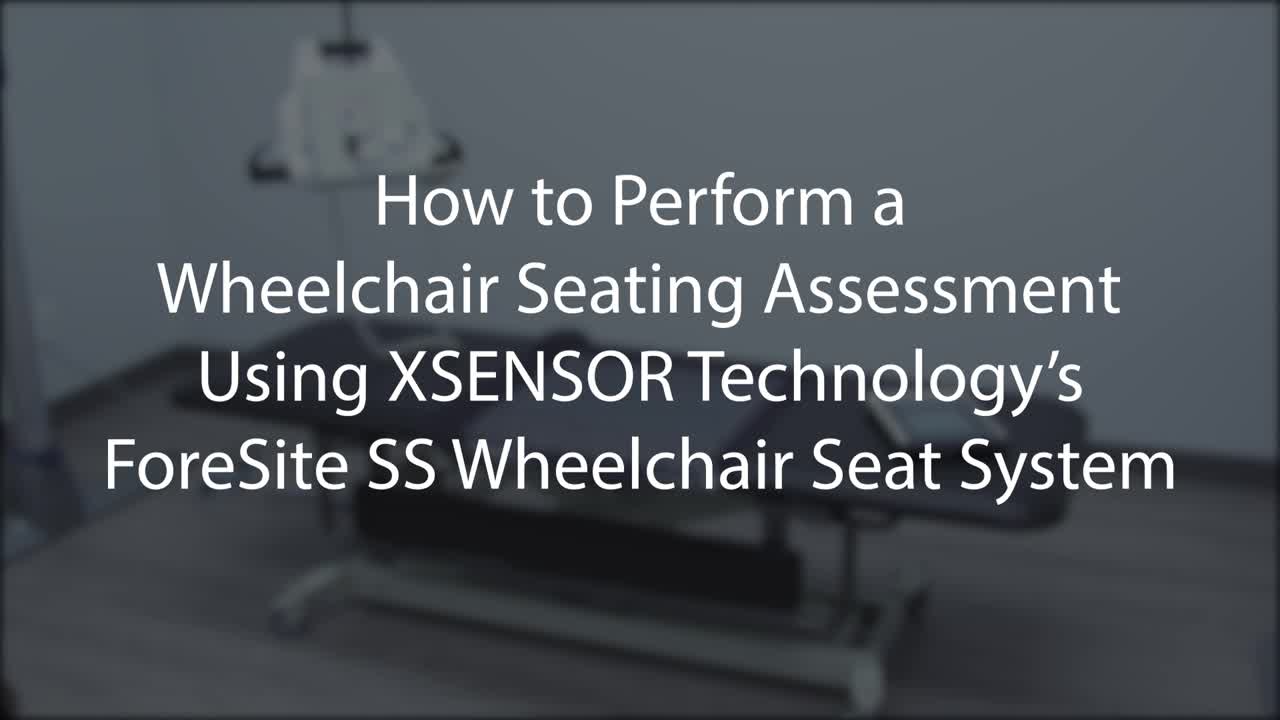
How the ForeSite SS Helps Improve Clinical Seating Decisions

When it comes to wheelchair seating assessments, there are standards and best practices, but no “cookie-cutter” way to do them. Every therapist has their own approach, and that very approach may differ based on their patient’s exact needs and goals. Regardless of how you perform your evaluations, pressure mapping can help you save time and make confident seating decisions that ensure the comfort and safety of your clients.
In Part 3 of our webinar series, Taking the Pressure Off, Occupational Therapist Timothy Hill walks us through his clinical process for developing a seating solution using the ForeSite SS Wheelchair Seating System. Timothy has been using pressure mapping systems and technology to help his clients for several years and has performed hundreds of assessments in community settings throughout his career.
Pressure mapping can help achieve optimal wheelchair seating by:
- Identifying elevated pressure to the precise body location and implementing a seating design to effectively redistribute pressure.
- Observing posture and understanding how improper wheelchair components, such as poor fitting cushions, can lead to postural issues and pressure injuries.
- Educating clients on pressure relief to prevent injuries from occurring.
For example, if a wheelchair user’s seat depth is too shallow, pressure mapping can help inform your intervention strategy to prevent pressure injuries to the sacrum and coccyx.
A seating assessment is meant to identify peak pressure areas of the client when sitting in a natural position with their current cushion/backrest and chair geometry.
For Timothy, steps included in his seating assessment are:
- Gathering information on client history, such as pre-existing conditions, lifestyle, and what current cushions, equipment, and hardware they are using
- Evaluating and assessing the client’s functional abilities
- Performing a physical assessment, including a mat examination
- Pressure mapping the client’s current seating position
- Making any necessary changes to their positioning
- Pressure mapping on different cushions to assess options for pressure redistribution and positioning
Prior to Timothy’s assessment, his client complained of pressure in his pelvic area. He used pressure mapping to evaluate his client’s current cushion and with the ForeSite SS’s real-time visualizations, saw improvements could be made by slightly increasing the depth of the seat and reclining the backrest.
To ensure there wasn’t a better solution, Timothy introduced a second cushion and used pressure mapping to evaluate. Immediately, he saw that the second cushion significantly increased the peak pressures and would not be a better fit.
In a matter of minutes, Timothy was able to compare his adjustments and validate that the first cushion with slight modifications was the optimal fit for his client.
For a more in-depth look at how pressure mapping can save you time and improve your seating assessments, watch our webinar, Taking the Pressure Off (Part 3), on-demand.
More about Timothy Hill:
Timothy Hill has been an Occupational Therapist for over 20 years and specializes in inpatient long-term care, Muskulo-skeletal (MSK) rehabilitation, outpatient homecare, and more. Previously, he was a board member of the Canadian Paraplegic Association of Alberta (now Spinal Cord Injury Alberta). He has a practice, Peak OT Services, and is based in Calgary, Alberta, Canada.

